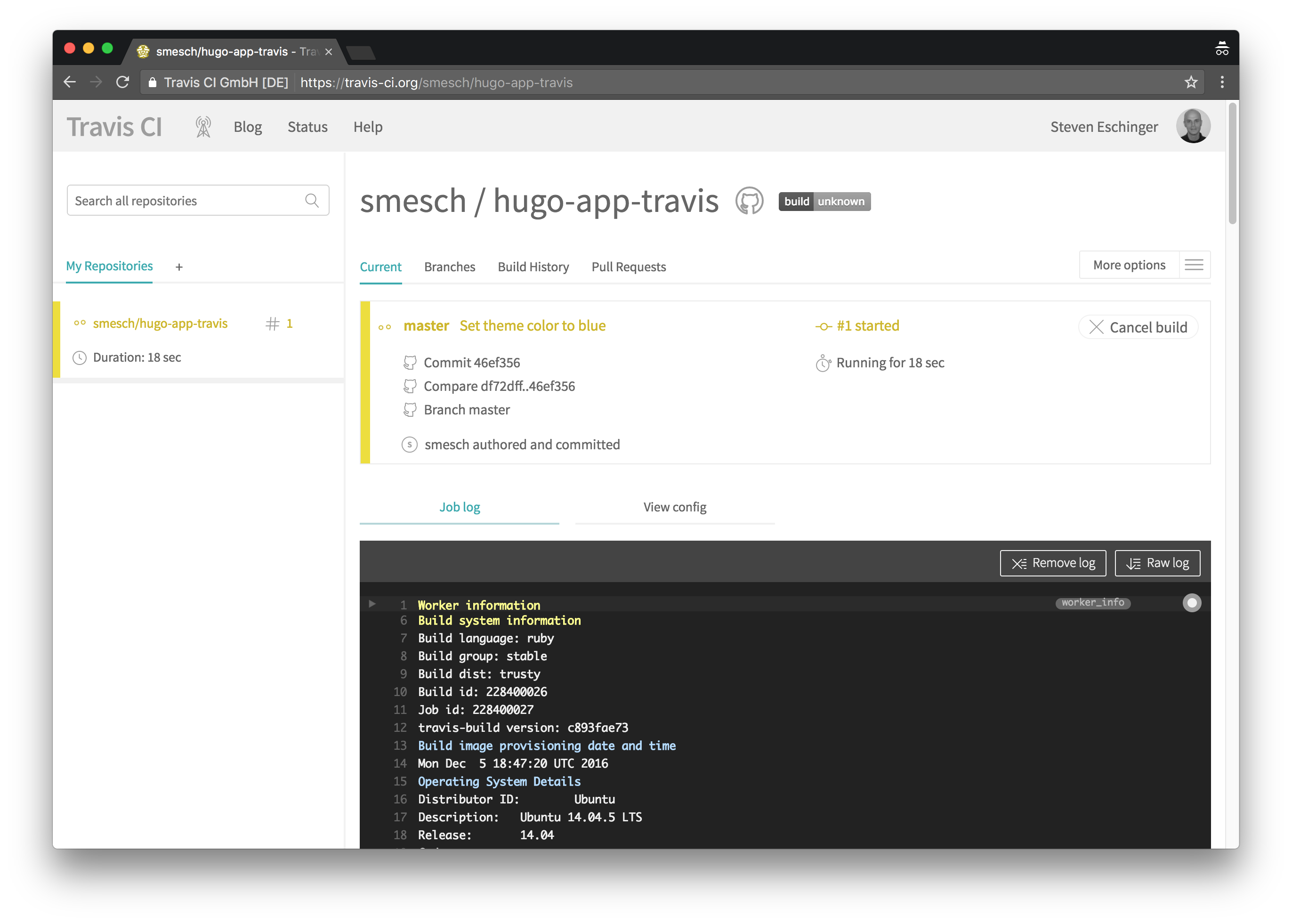Getting To Know K8s | Lab #8: Continuous Deployment with Travis CI and Kubernetes

This post was updated on September 18th, 2017 for Kubernetes version 1.7.6 & Kops version 1.7.0
Introduction
In the previous lab, we created an example continuous deployment pipeline for a Hugo site, using a locally installed instance of Jenkins in your Kubernetes cluster.
And in this lab, we will be recreating the same continuous deployment pipeline using Travis CI. Travis CI is a hosted continuous integration service used to build and test software projects that are stored in GitHub. It is free to use for any public GitHub repositories and they have commercial offerings if you want to use it for private repositories.
The Travis CI pipeline we will create will cover the same four stages that the Jenkins pipeline did in the previous lab:
- Build: Build the Hugo site
- Test: Test the Hugo site to confirm there are no broken links
- Push: Create a new Docker image with the Hugo site and push it to your Docker Hub repository
- Deploy: Trigger a rolling update to the new Docker image in your Kubernetes cluster
The configuration of the pipeline will be defined in a .travis.yml file in your Hugo site GitHub repository, similar to the Jenkinsfile we created for the Jenkins pipeline.
And as Travis CI is tightly integrated with GitHub, the pipeline will be automatically run every time there is a commit in your GitHub repository.

